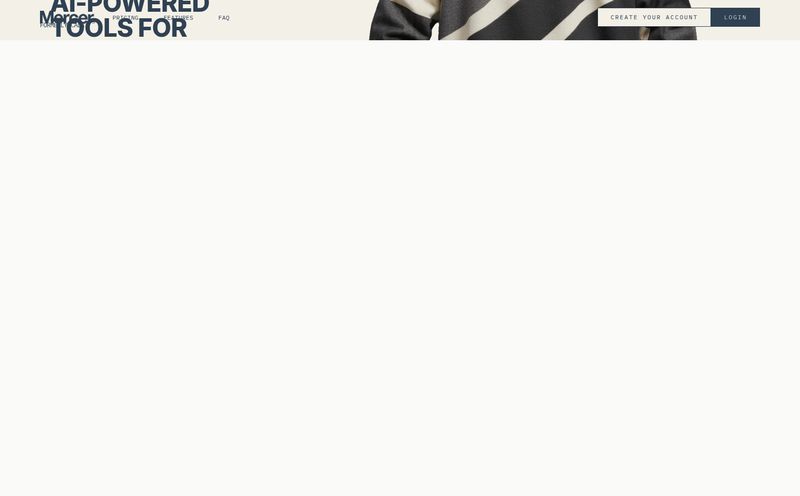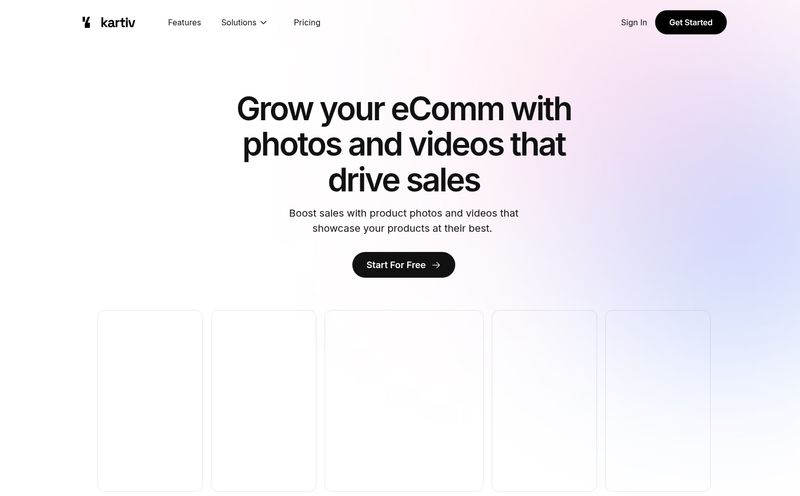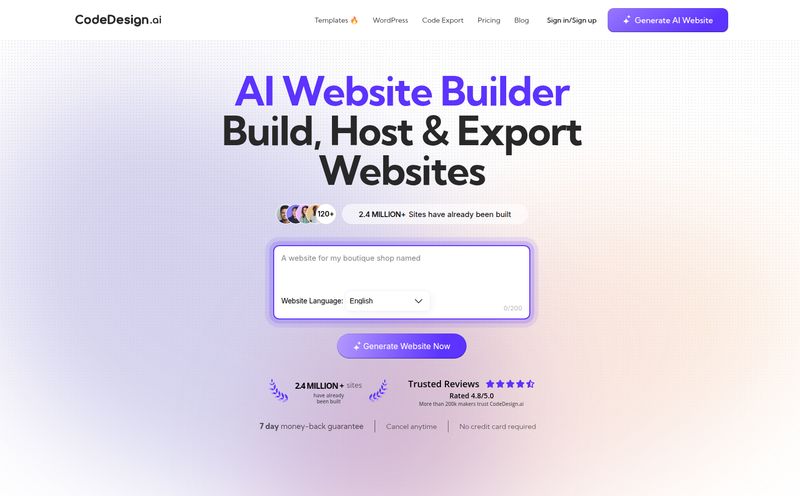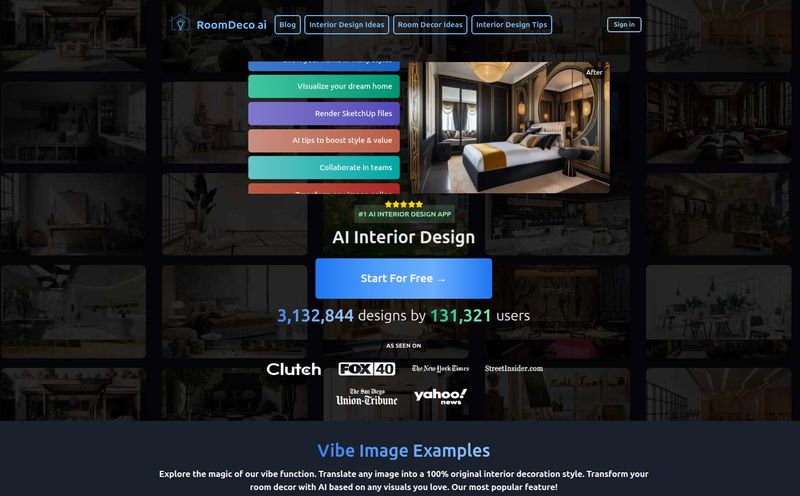We’ve all been there. Staring at a blank Figma canvas, the client’s voice echoing in your head: “Just make it look… modern. And trustworthy. But also fun.” You start scrolling through the usual inspiration sites, your eyes glazing over as the same five-color palettes from 2019 keep popping up. The tyranny of the blank canvas is real, my friends.
For years, my process involved a messy cocktail of Pinterest boards, frantic searches on Adobe Color, and maybe a bit of just randomly mashing the color picker until something didn’t look terrible. It worked, mostly. But it was a grind. A time-suck. Then I stumbled upon something that genuinely shook up my workflow: AIColors.
It's an AI-powered color palette generator from the folks at BairesDev, and it does exactly what it says on the tin. But how it does it… that’s the interesting part.
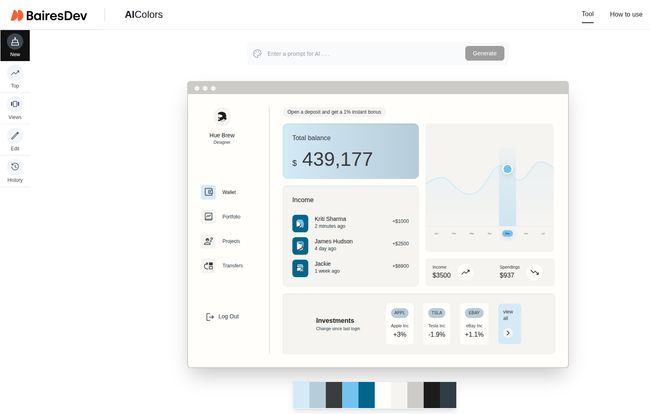
Visit AIColors
So, What is AIColors Anyway?
At its core, AIColors is a tool that uses AI—specifically OpenAI's GPT-3.5 model—to dream up color palettes based on simple text you feed it. Instead of just spinning a color wheel, you can literally describe the vibe you’re going for. Think of it less like a slot machine for hex codes and more like having a conversation with a very fast, very focused art director.
You type in a prompt, hit generate, and boom. A color palette appears, ready to be tweaked, saved, or exported. But that's just the surface level stuff.
The Experience of Using AIColors
I’ve spent the better part of a week kicking the tires on this thing, and I've got some thoughts. There's a lot to like here, especially for a tool that costs absolutely nothing.
The Magic of Text-to-Palette Generation
This is the main event, the headline act. The ability to translate a feeling or a concept into a tangible set of colors is, frankly, a bit of a game-changer for brainstorming. My first few prompts were pretty basic: “calm and professional,” “bold and energetic.” The results were… fine. Predictable, even. A bit boring.
But then I got creative. I tried prompts like:
A neo-noir detective movie set in Tokyo
An artisanal bakery on a sunny Sunday morning
A 1980s retro arcade with glowing neon
And that's when it clicked. The AI came back with palettes that were not just usable, but interesting. The Tokyo prompt gave me deep, inky blues and blacks, punctuated by a vibrant, electric pink and a muted cyan. The bakery prompt yielded warm, buttery yellows, soft browns, and a gentle cream. It felt less like random generation and more like genuine interpretation. It’s a fantastic way to break out of a creative rut.
A Goldmine of Community-Sourced Inspiration
If you're having a brain-fade moment and can't even think of a prompt, AIColors has you covered. It features a whole gallery of palettes created by other designers. This is huge. It’s like peeking over the shoulder of hundreds of other creatives to see what they're cooking up. You can scroll through, see a palette you like, and either grab it wholesale or use it as a starting point for your own edits. It turns the tool from a solitary exercise into a more communal well of ideas.
It’s Genuinely Free, No Strings Attached
I kept looking for the catch. The “Upgrade to Pro” button. The 7-day trial countdown. But there isn't one. In an industry where every useful service seems to be moving to a subscription model, finding a capable, powerful tool that is 100% free feels like finding a unicorn. This makes it incredibly accessible for students, freelancers just starting out, or even seasoned pros who just need a quick tool without another line item on the company credit card.
Let's Be Realistic: The Not-So-Perfect Parts
Okay, it's not all sunshine and perfectly harmonized hex codes. This isn't going to replace your entire design suite, and it has its limitations. I think its important to be straight up about them.
First, the AI can be a bit of a wildcard. For every brilliant palette it generates, you might get a couple of duds. The quality is heavily, heavily dependent on how good your prompt is. Garbage in, garbage out, as they say. You have to learn how to 'speak its language' to get the best results.
Second, the editing capabilities are pretty basic. You can swap colors around, maybe tweak a shade here or there, but this is not Adobe Illustrator. You can’t fine-tune every single aspect of the color relationship. My workflow has become: use AIColors for the initial spark of genius, then copy the hex codes into Figma or Sketch to build out the full design system with tints, shades, and component states. Think of AIColors as the place you find the raw ingredients, not the kitchen where you cook the final meal.
Who Is This Tool Actually For?
So, who should have AIColors bookmarked? In my opinion, it’s a perfect fit for a few different groups:
- Web & UI/UX Designers: This is the sweet spot. It's brilliant for quickly mocking up different visual directions for a new app or website.
- Frontend Developers: For developers who need to quickly spin up a decent-looking interface without a dedicated designer, this is a lifesaver. No more `lightblue` and `lightgrey`.
- Content Creators & Marketers: Need a quick color scheme for a social media graphic or a new landing page? This is probably the fastest way to get something that looks professional.
- Students & Hobbyists: Since it’s free, it’s an amazing learning tool for understanding color theory and seeing how different concepts translate into palettes.
It’s probably not for print designers who need precise CMYK or Pantone conversions, or for high-level brand strategists who are building a color system to last a decade. It’s a tool for speed, ideation, and inspiration.
The Best Thing About AIColors Pricing
I'll make this section short and sweet. It’s free. Completely. There's no pricing page because you dont need one. You can just go to their site and start using it. That’s it. In a world of freemium and tiered subscriptions, this kind of straightforward generosity is refreshing.
Frequently Asked Questions About AIColors
How accurate is the AI in generating palettes?
It's more interpretive than strictly accurate. If you ask for “Coca-Cola colors,” you'll get red and white. But if you ask for “a refreshing feeling,” the results are subjective. The key is to be descriptive and evocative in your prompts. The more detail you give the AI, the better your results will be.
Can I export the palettes to my design software?
Yes, but not through a direct plugin (at least, not yet). The primary way to 'export' is to copy the hex codes for each color. It’s a simple copy-paste job to get them into Figma, Sketch, Photoshop, or even just a CSS file. Super simple.
Is AIColors really, truly free? What’s the catch?
As of my last check, yes, it is 100% free to use. BairesDev, a tech solutions company, seems to offer it as a useful tool for the design and developer community. There's no hidden cost or trial period. It's just a great free resource.
Does it only work for web design?
While it's optimized for digital (given that it outputs hex codes), inspiration is universal! You could easily use a generated palette as a starting point for anything—a presentation slide deck, a room's interior design, or even a wardrobe. You’d just have to manually match the colors for your specific medium.
Is there a limit to how many palettes I can generate?
I haven't hit one yet, and I've been generating a lot of them. It seems to be unlimited, which encourages experimentation and play. Go wild!
Final Thoughts: A Must-Have in Your Toolbox
Look, AIColors isn't a silver bullet that will solve all your design problems. It won't magically give you taste or an understanding of visual hierarchy. But what it will do is obliterate the fear of the blank page. It’s an incredible brainstorming partner that can give you dozens of interesting starting points in the time it would take to find one decent palette manually.
For a free tool, the value here is off the charts. It's already earned a permanent spot in my browser's bookmark bar, right next to my go-to resources. It's fast, fun, and genuinely useful. In the ever-growing world of AI tools, this one feels less like a gimmick and more like a genuinely helpful assistant. Give it a try; you've got nothing to lose and a whole world of color to gain.
